February 19, 2021
Powerless
A sound awoke me: a clicking. Then, total silence, no furnace hum, no sound at all. Just before 2 a.m. on Monday, February 15, 2021, the power went out. The joyfully expected snow had indeed arrived, where at dawn we all faced surprises that we hadn’t anticipated.
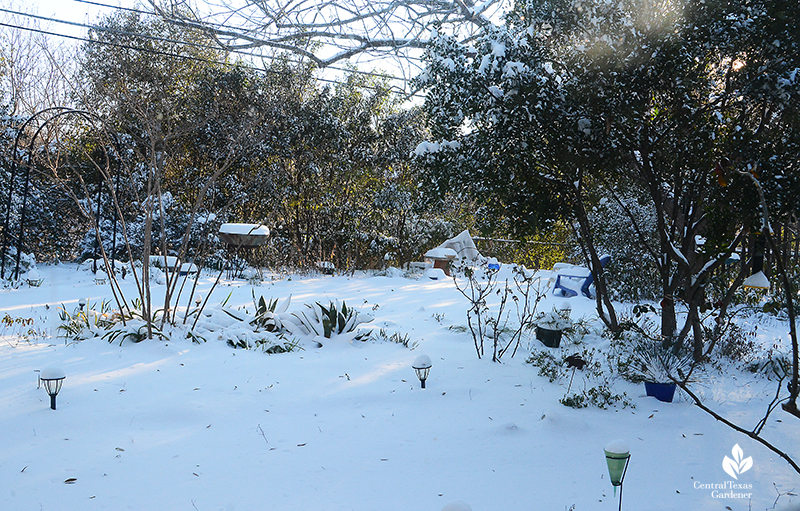
Freezing rain started the wintry ball rolling a few days before Valentine’s Day Sunday. On Saturday morning, our firecracker ferns (one even in bloom) spun us ice sculptures when stems froze and split. Native frostweed is famous for this trick, but this time, all kinds of plants joined in.
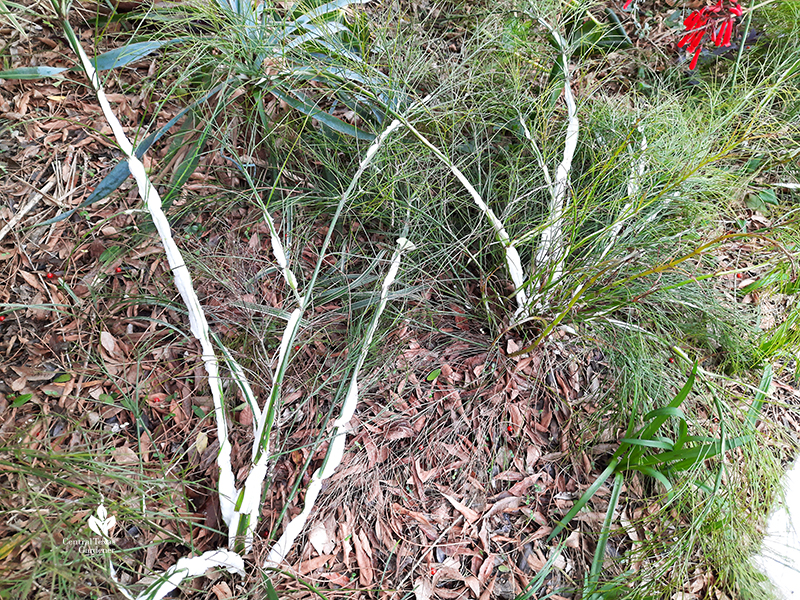
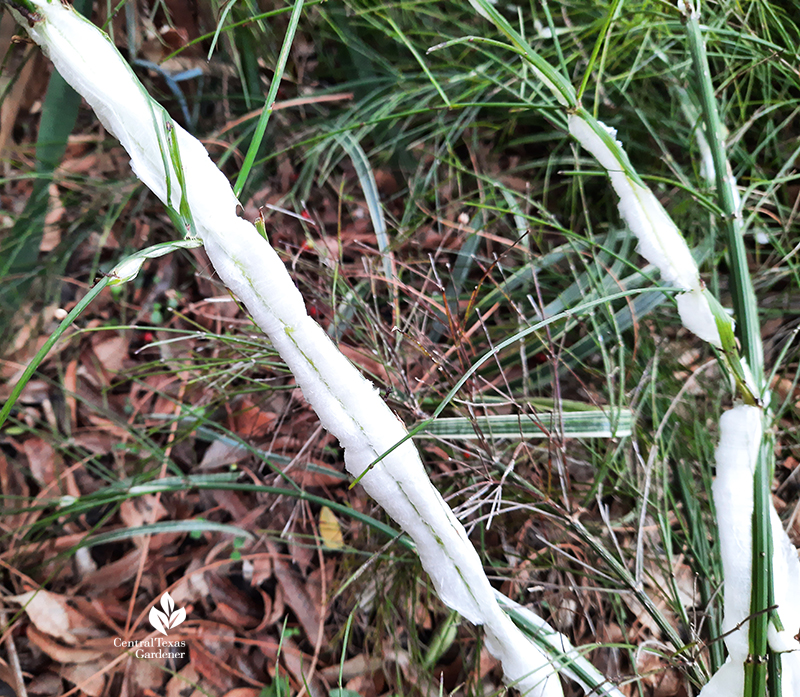
Before work on Friday, I’d taken a bucket out to rescue ice-tinged and/or sopping wet narcissus and leucojum blooms. After inserting into vases of warm water, I set the blow dryer to low and stood a few feet away to dry them off. In my imagination, they sighed a big “Ahh.” But I drew the line at styling!
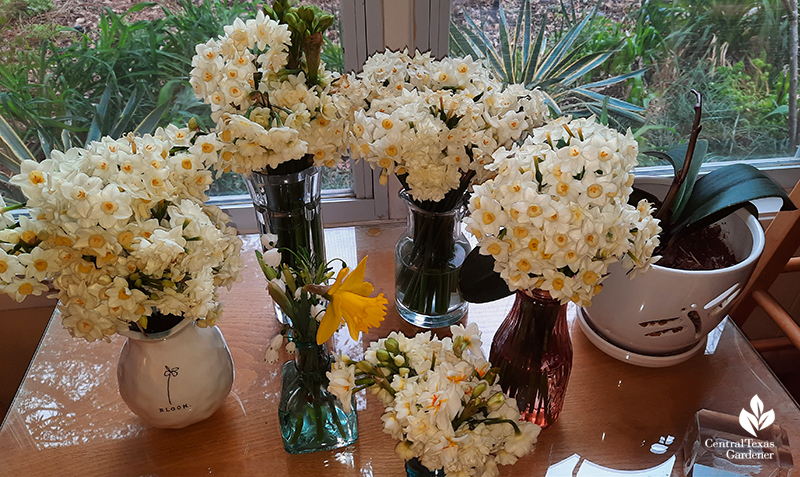
Golden Narcissus ‘Marieke’ was just a day or two away from trumpeting its opening. A neighbor walking her dog hollered, “Getting a picture before the freeze?” She was worried about her plants, too.
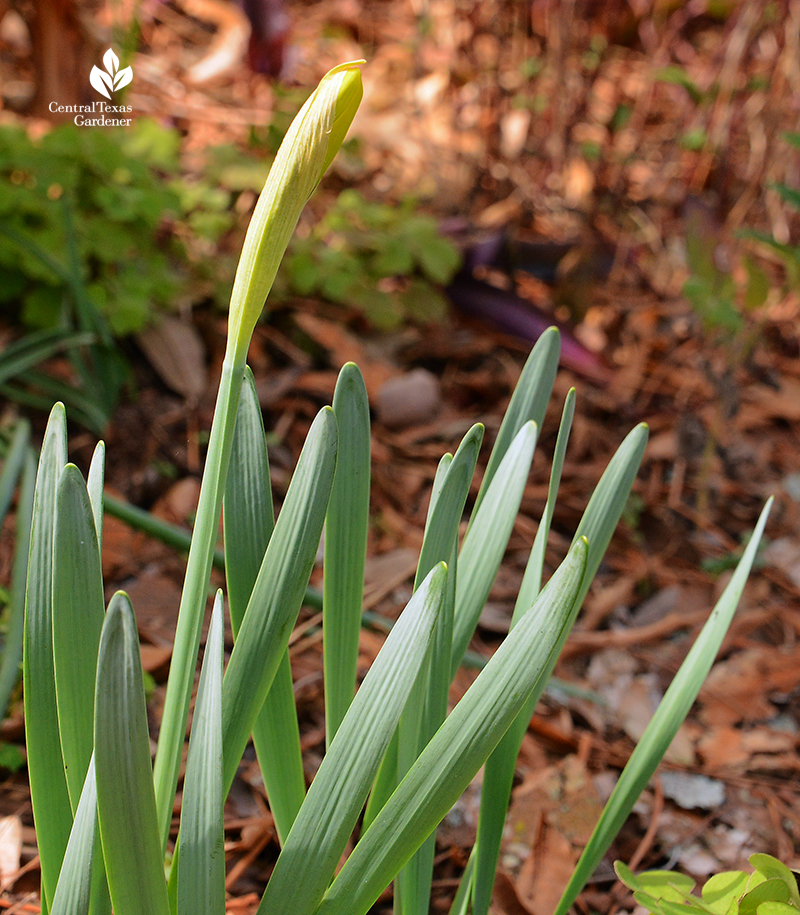
By Valentine’s Day, the coldest on record, one bud unfurled against leucojum’s revived white teardrops.
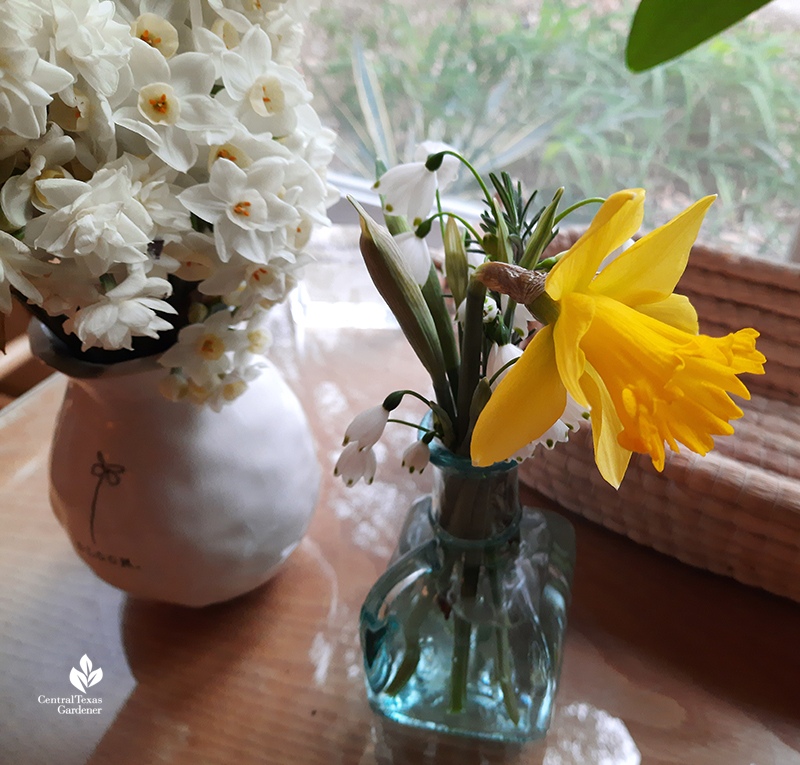
The house was sweetly fragrant as we gathered flashlights and candles, collected water for drinking and toilet flushing, and topped off USB portable chargers for the phones. AND, made enough hearty stew to last for a few days (I’d made bean soup on Saturday to alternate with stew.)
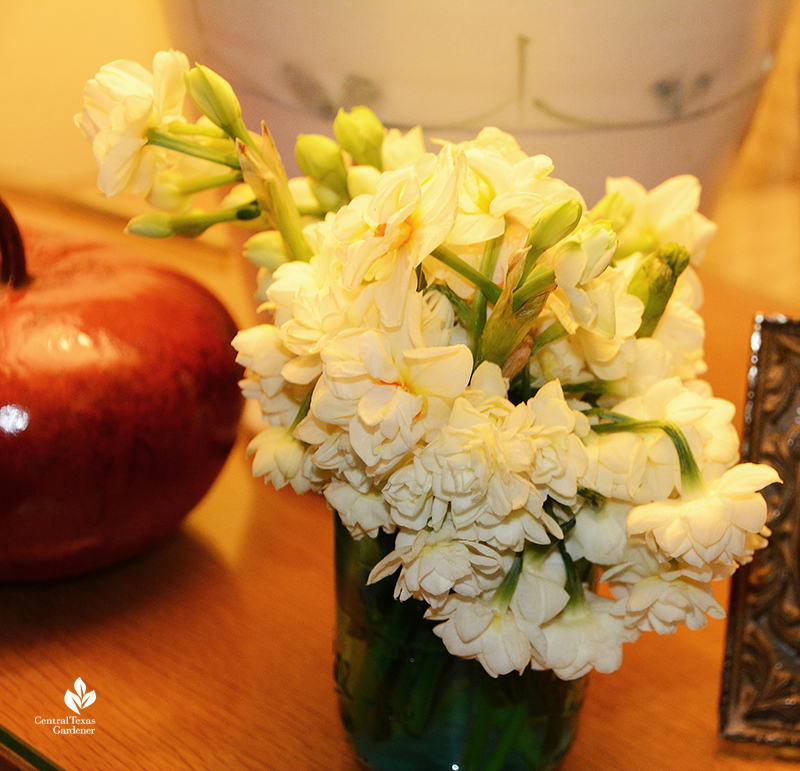
Snow is such a novelty for us that Monday’s wondrous deep blanket was truly awesome. Over a few hours, we got more snow (6.4”) than we’ve seen total in 20 years.
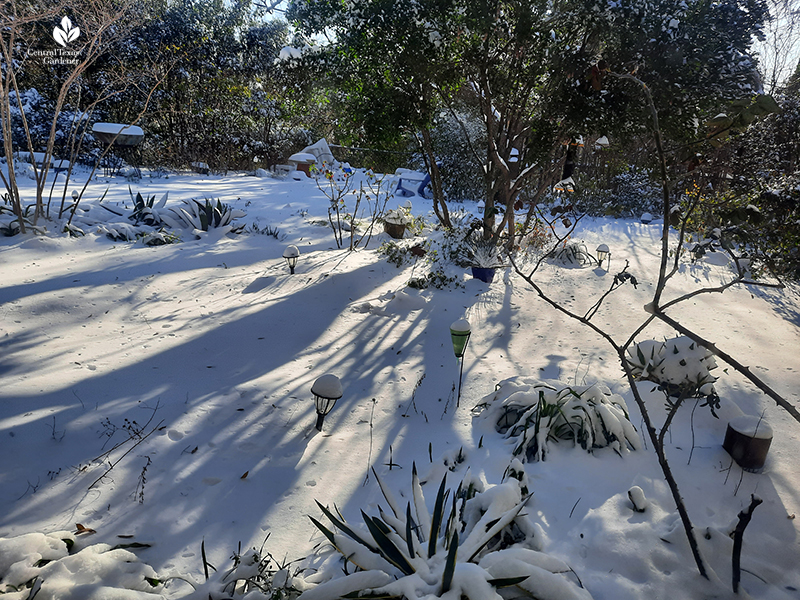
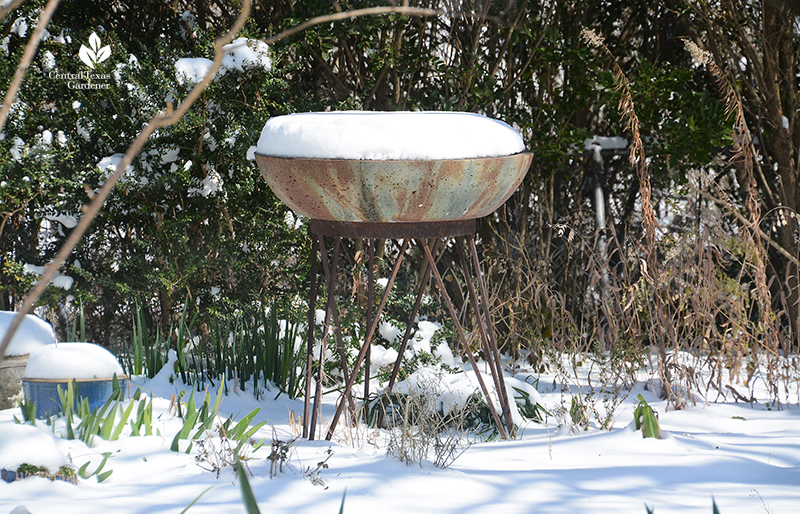
Agave schidigera snowcone, anyone?
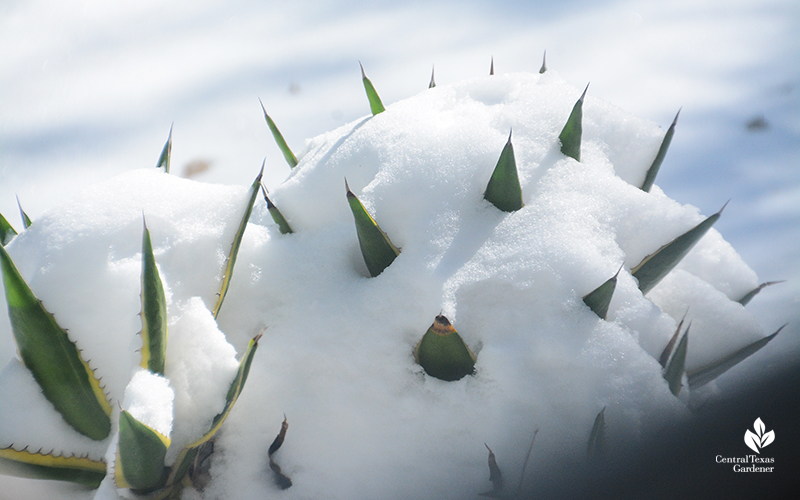
Spiky snow Yucca pallida.
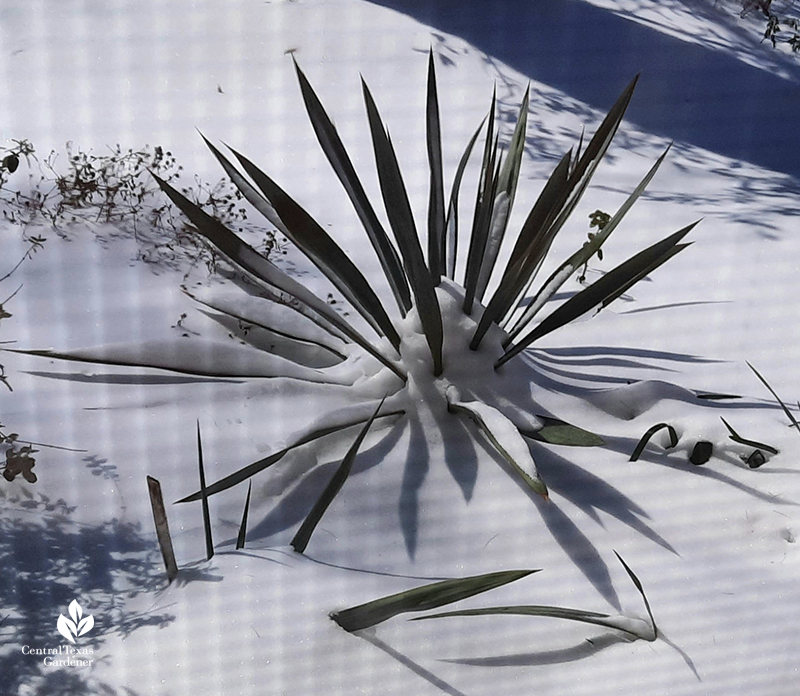
Despite no heat inside, it was still good enough for more narcissus buds to open and watch the snowy show.
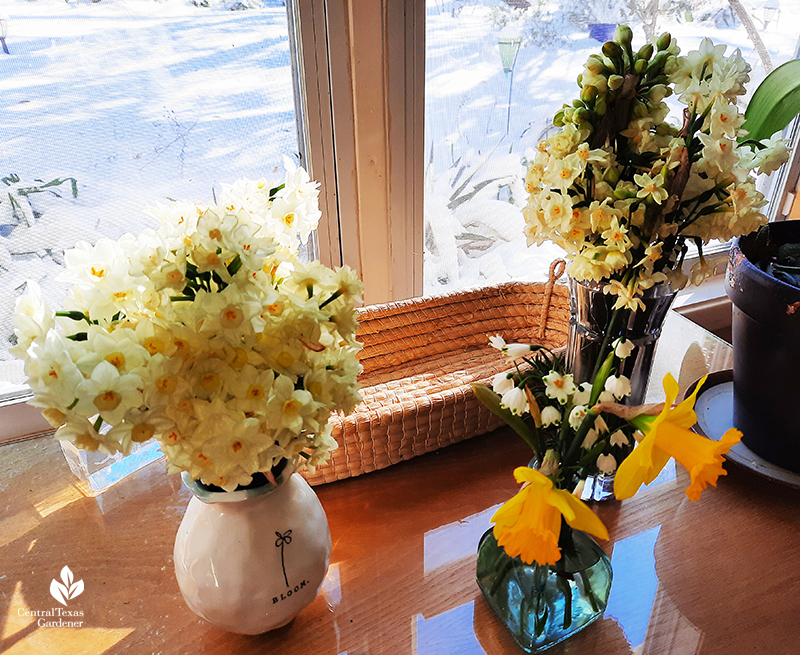
Wednesday’s icy rain crystallized our world.
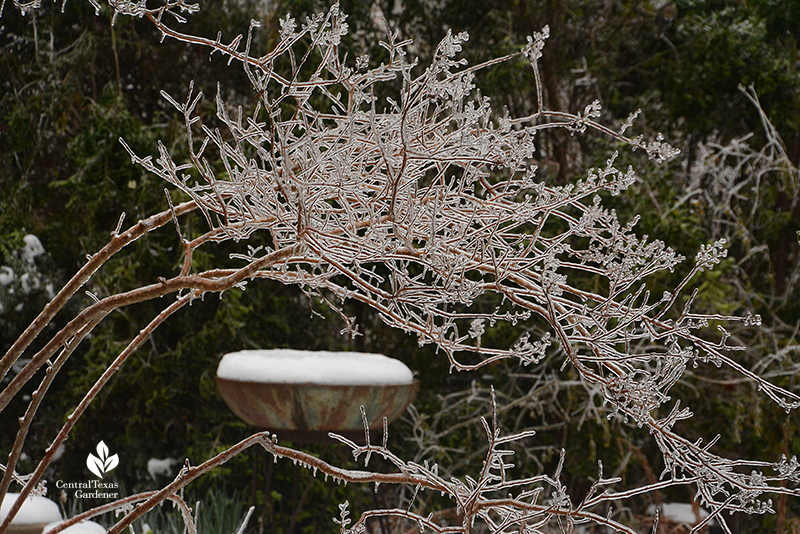
It felled even more limbs across town (including one small live oak branch for us) and bowed countless branches like our mountain laurel. Hungry goldfinches still found the Niger thistle feeder.
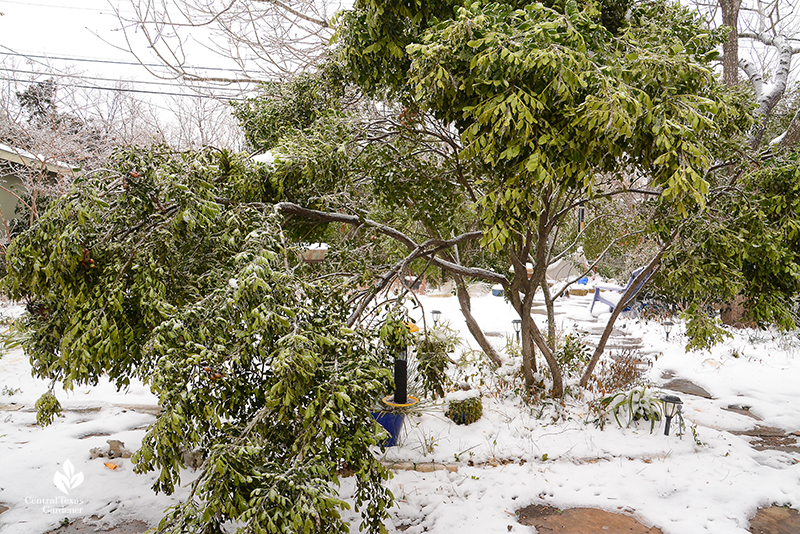
All along, we’ve fed birds and squirrels by pushing out an old plastic trash can lid full of seeds and unshelled peanuts since it was too icy to get to the feeders. I’d gotten a seed and suet feeder on Saturday that was a hit, too, especially with a wren who pecked at it until dark. A White-winged dove, all fluffed out, posed on a break.
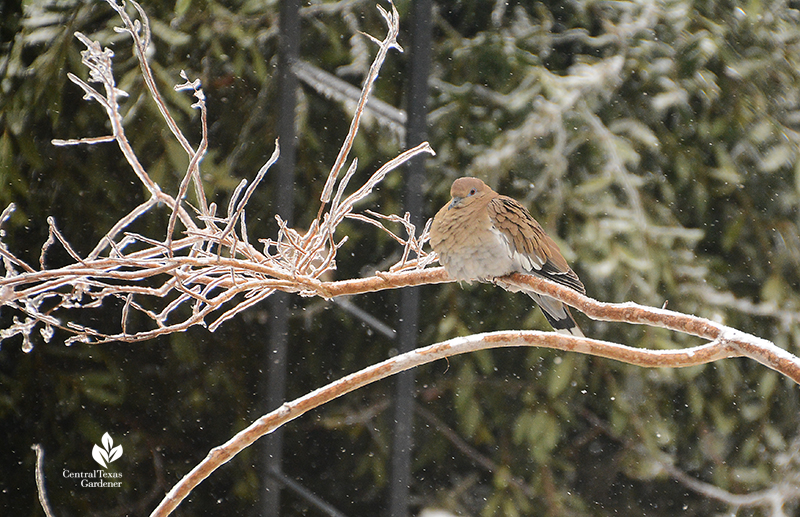
Then we heard a huge racket on Wednesday, and this one was delightful!
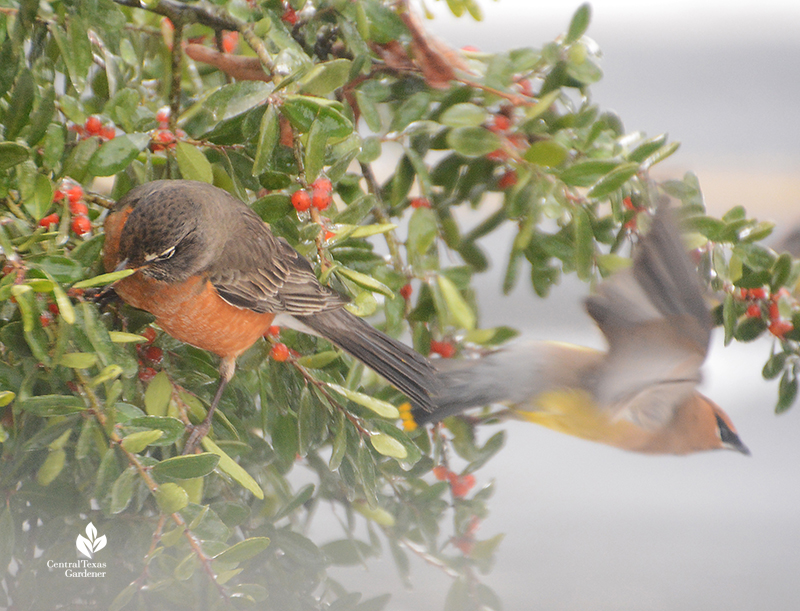
A huge flock of Cedar waxwings and robins descended in a chirping feeding frenzy on the front yard’s yaupon holly, a joyful reminder about how our plants can help hungry wildlife. Their chatter, politics, and antics to scarf down every fruit broke another record. Pictures diffused from window shots.
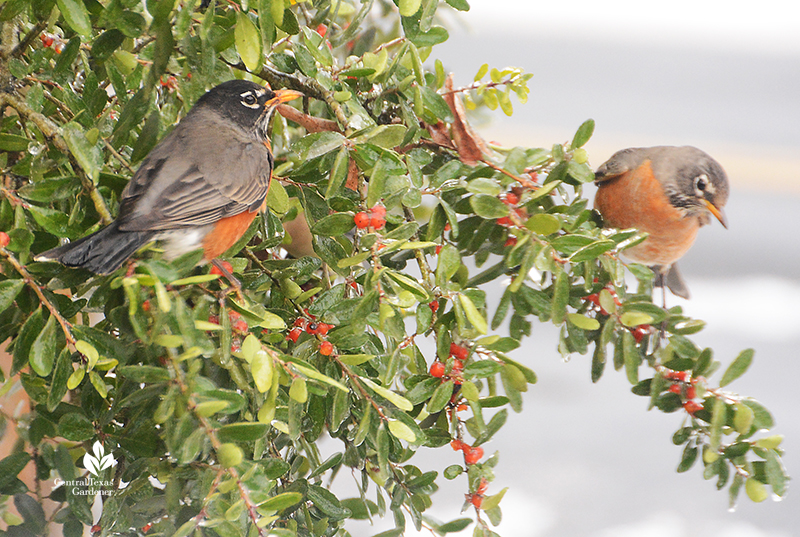
And, they distracted us from a situation we were powerless to amend.
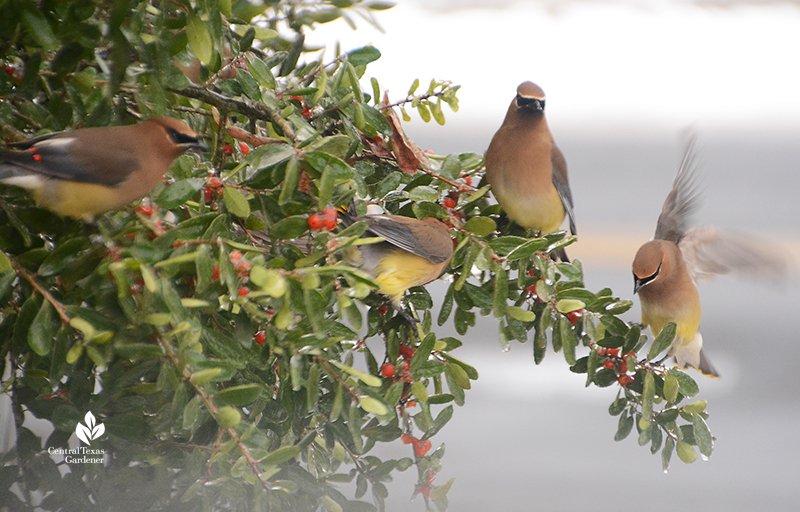
Wildlife biologist Danielle Belleny told us a few weeks ago in an interview that the large numbers of waxwings and robins this year is called “irruption” when food supplies north of us are diminished for birds.
We are powerless to protect everything in our gardens, not just from unusual cold, but also from extreme drought and floods. We can only make the best choices we can for our climate, soil, water resourcefulness, and wildlife. Then, sometimes, we must accept loss and try again. What plants will make it after a record 144 consecutive hours below freezing weather?
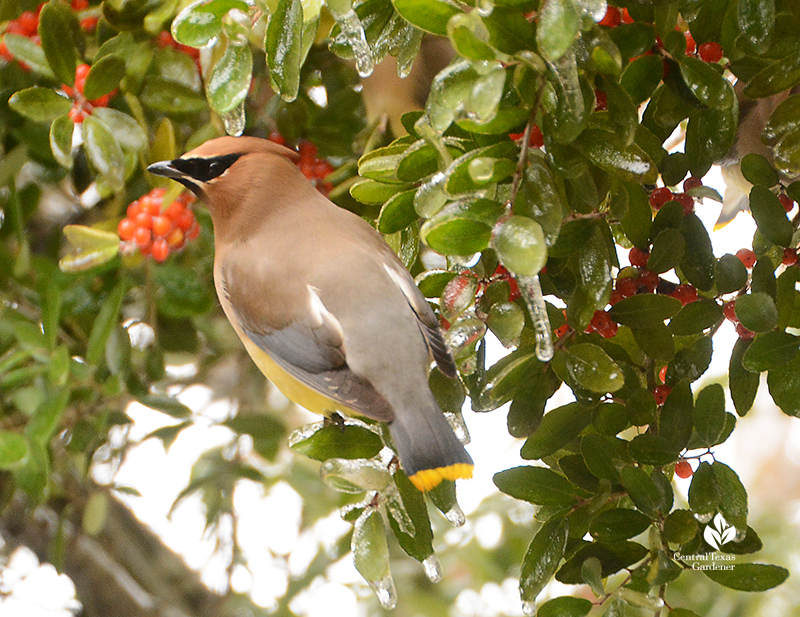
Only time will tell. Let me know how your plants fare—we may not know about some for a few months, but let’s record this together.
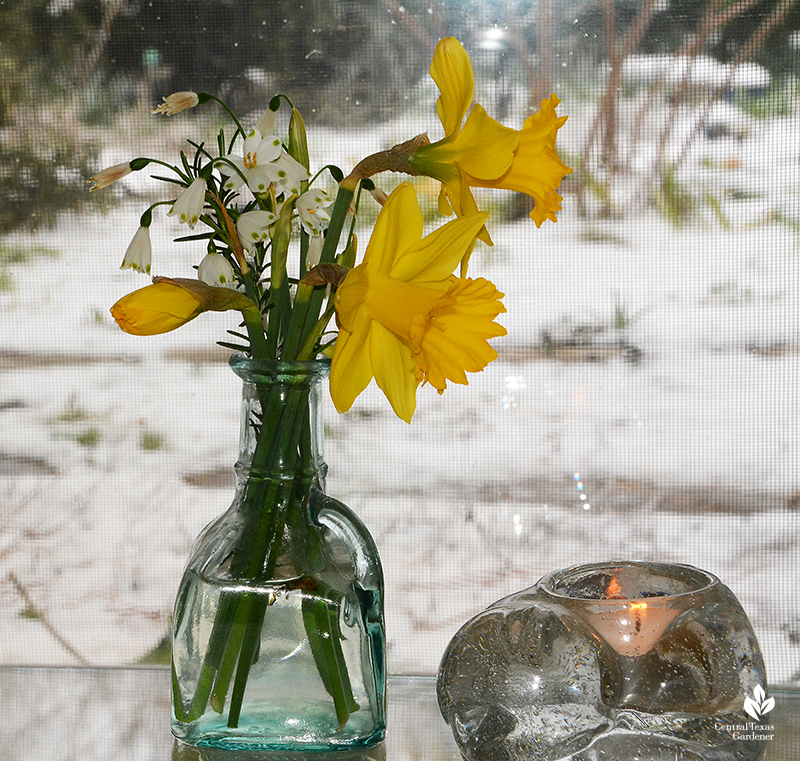
Hugs to you all, Linda
tags:

